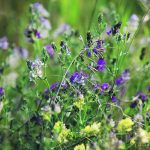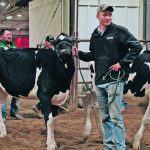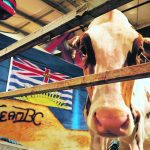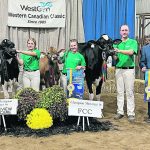Incorporating weeping properties would be an additional economical and labour-saving advantage for apple growers
The practice of tying down apple tree branches to improve productivity has been done for more than a century. How the practice works has not been fully understood, however studies have shown that bending the branches helps the trees provide more nutrients and carbon toward flowering and fruiting rather than toward leaf and branch growth. […] Read moreStories by Freelance writer

Displaced Ukrainians find jobs in agriculture
New Canadians from the Ukraine are often educated and eager to work but find it difficult to navigate language barriers
Many Ukrainian newcomers have arrived at Regina International Airport over the last year and half clutching onto bags packed with the only belongings they have left from their former homes. The Russian invasion carries on in Ukraine, while these select few, after having passed multiple health exams and other legal hurdles, have made it to […] Read more
Study examines how competing microbes access plants
Bacteria that demonstrate positive effects on plants in the lab often can’t compete in field conditions
The goal is to find a strain, or several strains, of bacteria that offer maximum benefit to the host crop and can successfully compete against local bacterial strains already in the soil.
Forage tests inform harvest strategy

Preparing pregnant mares for winter and foals

Community support key to surviving wildfires
Alta. and B.C. ranchers say communication also important as they talk about lessons learned this dry, dangerous summer
Planning, community support and being able to move quickly have been integral for ranchers managing grazing cattle as wildfires advance. The Hoffman-Turner family is keeping an eye on the Ross Moore Lake Fire, near Kamloops, B.C., after it forced them to evacuate their home more than five weeks ago. Diane and Grant Hoffman, their daughter […] Read more
Ag industry warned of possible recession in ’24
A market analyst advises the sector, including fertilizer, to watch for key indicators and then keep it all in perspective
A leading Canadian business analyst says several key market indicators point to a recession in 2024. Catherine Murray’s main message to the Fertilizer Canada delegates at their annual meeting held in Vancouver on Aug. 16 is that “a recession is coming in 2024.” Murray hosts The News Forum and is best known for her work […] Read more
Young dairy producers share their tips and tricks
Last week’s Western Canadian Classic youth dairy show in Saskatoon gave participants to a chance to shine in the ring
Young dairy farmers got moo-ving in Saskatoon last week at the 37th annual Western Canadian Classic youth dairy show. Participants showed off their skills with herding, clipping and judging competitions for junior, intermediate and senior levels. Participants ranged in age from 10 to 21 years old, so there was plenty of knowledge sharing between the […] Read more
Last year’s Team BC tragedy remembered at Dairy Classic
Three people and 23 cattle were killed last year while heading home from the Western Canadian Dairy Classic in Brandon
The Western Canadian Dairy Classic took a moment to acknowledge a deadly crash that took place last year following the 2022 youth dairy show. Following the event in Brandon, the semi carrying 24 cattle from Team British Columbia and Team Alberta was involved in a head-on collision with a logging truck. The Aug. 28 crash […] Read more
Western Canadian Classic participants shine in the ring
More than 83 young dairy producers competed in more than 30 individual and team competitions and cattle classes
Saskatoon’s Prairieland Park Ag Centre was transformed into a big top for the 37th annual Western Canadian Classic youth dairy show, affectionately called the Cirque Moo Soleil for the circus-themed event. More than 83 young dairy farmers competed in about 30 individual and team competitions and cattle classes, showing their presentation skills and knowledge of […] Read more



